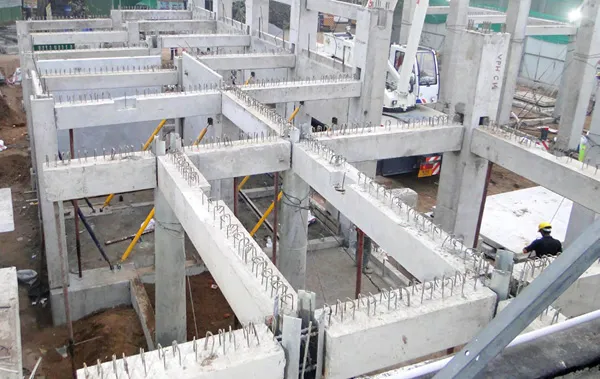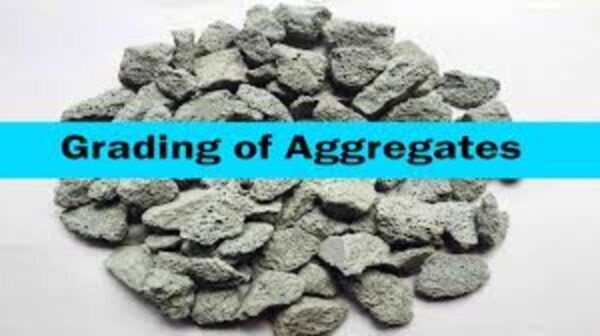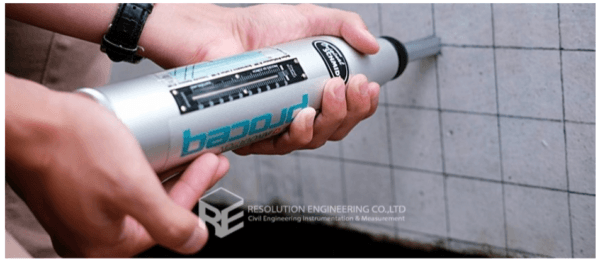Concrete segregation is caused due to various factors, including improper mixing, transportation, and placement techniques. One of the primary causes is the maximum height from which the concrete is dropped during placement.
Segregation of concrete is a serious issue that can compromise the quality and performance of concrete structures.
It occurs when the constituents of concrete – cement, aggregates, and water – separate from each other during transport, placement, consolidation, or curing. This results in non-uniform concrete that lacks integrity and durability.
To prevent segregation, the concrete should not be thrown from a height of more than 1.5 meters. Exceeding this height can lead to the separation of heavier aggregates from the cement paste, resulting in a weak and non-homogeneous mixture.
Understanding the causes, types, effects, testing methods, prevention techniques, and repair procedures for segregation in concrete is crucial for civil engineers and construction professionals.
This comprehensive guide provides detailed insights into various aspects of concrete segregation.
What is Segregation of Concrete?
Concrete segregation refers to the breakdown of the uniform distribution of aggregates, cement, and water in concrete. It causes some areas of the concrete to be rich in certain ingredients while deficient in others.
Segregation happens due to differences in the densities and sizes of concrete constituents. Heavier and larger aggregates tend to sink and settle at the bottom. On the other hand, the lighter cement paste floats upwards. This creates non-homogeneous zones in the concrete mass.
Some key points about segregation in concrete:
- It results in weak zones in concrete with inferior quality.
- Segregated concrete lacks strength and durability.
- It can occur during production, transportation, placement, or curing.
- Improper mix proportioning, handling, and consolidation increase segregation.
- Visual inspection can detect segregation in the hardened concrete.

Difference Between Segregation, Bleeding, and Swelling
Bleeding and swelling are two other phenomena related to segregation but differ in some aspects:
Segregation
- Physical separation of aggregates and cement paste.
- Creates aggregate-rich and paste-rich regions.
- Affects the entire concrete section.
Bleeding
- Water comes out on the surface without aggregates or cement.
- Only affects the top layer of concrete.
- Leads to weak and porous concrete surface.
Swelling
- Absorption of water by dry aggregates (specific gravity) resulting in their expansion.
- Mainly occurs during the plastic state of concrete.
- Can cause bulging and distortion in concrete.

Honeycombing and segregation:
- Refers to presence of voids and cavities in concrete surface and body.
- Caused by inadequate vibration or compaction during concrete placement.
- Leaves visual honeycomb-like holes and uneven surface finish.
- Reduces concrete strength and durability against water ingress.
- Can be repaired by patching up voids or reprofiling surface.
Segregation in Concrete:
- Physical separation of concrete ingredients like aggregates and paste.
- Causes non-uniform composition with aggregate-rich and paste-rich areas.
- Due to differences in density/size of particles and improper mixing.
- Compromises concrete integrity and properties throughout the section.
- Hard to detect visually in hardened concrete unlike honeycombing.
- May require extensive repair depending on severity.

Key Differences:
- Honeycombing is a surface defect while segregation affects entire volume.
- Honeycombing is visible but segregation is often internal and invisible.
- Segregation is more severe as it impacts overall concrete quality and longevity.
- Honeycombing can be rectified by localized repair but segregation may need extensive replacement.
So in summary, honeycombing is a localized surface defect whereas segregation causes non-uniform composition throughout the concrete. Proper placement, vibration and curing prevents both.
Causes of Segregation in Concrete
There are several factors during concrete production, transportation, placement, consolidation, and curing that induce segregation:
Mix Design Issues
- Excess water content leads to a fluid concrete mix that easily segregates.
- High proportion of coarse aggregates compared to fine aggregates.
- Inadequate paste volume to coat all particles.
- Poor grading of aggregates. Gap-graded mixes segregate easily.
Handling Problems
- Excessive mixing causes breakdown of aggregates and paste.
- Over-vibration breaks the bonds between particles.
- Improper pumping pressure agitates the concrete mix.
Workmanship Errors
- Long distance transportation without agitation.
- Uncontrolled free-fall placement from height.
- Delayed compaction after spreading concrete.
Other Factors
- Harsh weather conditions like rain, wind, or heat.
- Congested reinforcement restricting concrete flow.
- Nature of ingredients like shape, texture, absorption of aggregates.
Types of Segregation in Concrete
Segregation in concrete is categorized into three main types:
External Segregation
Also called macro or gross segregation. Visible separation of coarse aggregates from cement mortar happens. Results in aggregate-rich and paste-rich regions at different locations. Generally occurs during transportation or placement.
Internal Segregation
Microscopic segregation within the cement paste matrix. Cannot be visually detected but affects strength and permeability. Happens during mixing or early hydration stages.
Water Segregation
Bleeding leads to this type of segregation. Water rises up without solid particles and accumulates on the top surface. Causes weak and porous concrete surface.
How to Prevent Segregation in Concrete
To prevent segregation, the maximum height of concrete placement should be limited, and proper mixing and transportation techniques should be employed.
By understanding the segregation concrete definition and implementing best practices, contractors can ensure the production of high-quality, durable concrete structures, free from concrete bulging causes and other related issues.
Careful mix design and diligent construction practices are required to avoid segregation in concrete:
- Maintain optimal water content and water-cement ratio.
- Include both coarse and fine aggregates in suitable proportions.
- Use rounded, well-graded aggregates with a low absorption rate.
- Add segregation-reducing admixtures like viscosity modifiers.
- Avoid excess vibration and handling during placement and transportation.
- Pour concrete systematically in layers and compact promptly.
- Ensure proper curing to keep the concrete mix intact.
Testing Methods for Segregation of Concrete
Various test methods are used to evaluate the degree of segregation in fresh and hardened concrete:
Fresh Concrete Tests
- Slump test – Height versus diameter of slumped concrete gives indication of segregation.
- Penetration resistance – Measures ease of penetration of a probe in concrete layer.
- Column techniques – Concrete column is sawed axially to examine aggregate distribution.
- Wet screening – Washed sample is sieved to determine proportions of coarse/fine aggregates.
Hardened Concrete Tests
- Core examination – Visually inspecting cut cores or sawn slab sections.
- Petrographic examination – Microscopic investigation to identify aggregate-rich and paste-rich areas.
- Crosshole sonic logging – Measures sonic pulse velocity through concrete to identify defects.
- Impact-echo testing – Detects flaws based on impact-generated stress waves in concrete.
Effects of Segregation on Concrete Strength
Segregation has detrimental effects on the structural performance of concrete:
- Aggregate-rich zones are porous and prone to cracking due to less binder content.
- Cement paste-rich areas have high shrinkage and creep effects.
- Weak transition zones are created between segregated areas.
- Water segregation reduces surface strength and durability.
- Overall strength and elastic modulus of segregated concrete are lowered.
- Crack initiation and propagation increase due to non-uniform composition.
Proper tests like core strength evaluation, Schmidt rebound hammer, ultrasonic pulse velocity measurement etc. should be done to assess the strength loss in segregated concrete.
Repairing Segregated Concrete
Minor segregation defects can be repaired by:
- Applying cement slurry or anti-washout admixture to the affected areas.
- Pressure grouting of low viscosity epoxy resins to fill up pores.
- Coating with polymer bonding agents to improve bonding between zones.
For severe segregation:
- Cutting out and replacing segregated areas with fresh concrete.
- Steel reinforcement and additional formwork may be required prior to fresh concreting.
- Surface coatings like polymer modified cementitious mortars can be applied.
Prevention is better than cure. Proper care during construction is crucial to avoid repairing segregated concrete.
Standards for Assessing Concrete Segregation
Various standards and codes have specified acceptance criteria for segregation in concrete:
- ACI 117 – Aggregate distribution needs to be within 15% variation.
- ASTM C1567 – Segregation severity is visually categorized into three levels based on aggregate concentration.
- EN 12350-11 – Sieving method to quantify segregation resistance.
- CIRIA C660 – Provides guidance on inspection, testing and remediation of segregated concrete.
These standards are based on extensive research and cover different evaluation methods for segregation. Adherence to the acceptance limits ensures good quality concrete.
Segregation of Concrete Slump Test
The standard slump test for concrete indirectly measures segregation resistance. During the test, two diameters of the slumped concrete are noted – the maximum spread and the diameter perpendicular to it.
A large difference between the two diameters indicates potential segregation. The ratio of the two diameters is an index parameter called slump difference.
For good cohesion:
- Slump difference should be less than 30 mm.
- Slump ratio should be greater than 0.8.
If segregation is suspected, further direct testing of the slumped concrete or trial mixes should be conducted.
Tools to Reduce Segregation of Concrete
Several tools help minimize segregation during concrete transportation and placement:
- Concrete pump – Steady pumping action ensures homogeneous flow. Reduces handling.
- Tremies – Long pipes through which concrete is lowered into deep formwork without drop.
- Chutes – Enclosed chutes prevent exposure and impact. Angled to reduce free fall.
- Belt conveyors – Allow horizontal transportation over long distances without segregation.
- Bucket conveyors – Like tower cranes but fully enclosed to prevent material segregation.
Controlling Concrete Segregation Using Admixtures
Special chemical admixtures enhance the cohesion of concrete and curb segregation:
- Viscosity modifying admixtures (VMA) – Increase the viscosity and prevent components from separating. Most efficient option.
- Rheology modifying admixtures – Improve the flow characteristics and stability of concrete.
- Segregation reducing admixtures (SRA) – These act like VMAs with some differences in working mechanism.
- Fibers – Micro polypropylene fibers distribute evenly and bind the concrete.
The right type and dosage of these admixtures is essential for optimized performance. Proper field trials are recommended before actual use.
Conclusion
Segregation severely diminishes the structural integrity of concrete members. Therefore, concrete batching, transportation, placement, and curing require diligent practices and strict quality control to avoid segregation.
Testing the fresh and hardened concrete is necessary to detect any non-uniform composition.
Standards guide the acceptable limits of segregation. In case prevention fails, suitable repair techniques can be applied to restore segregated concrete sections.
The use of specialized admixtures enhances the homogeneity and stability of concrete against segregation.







